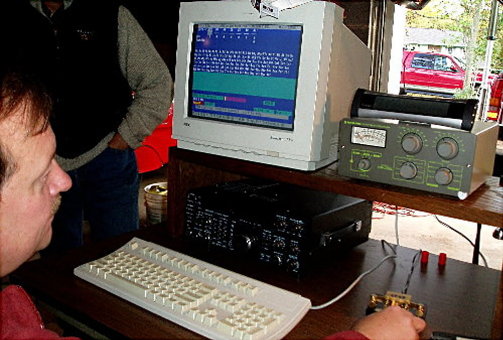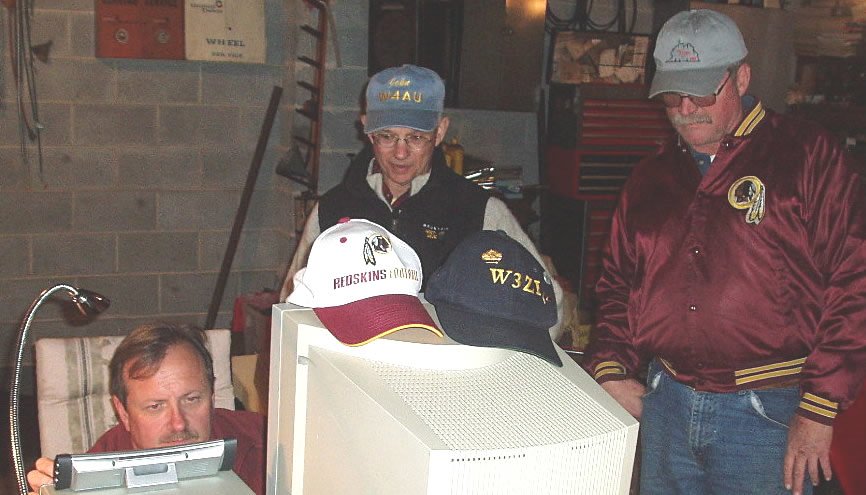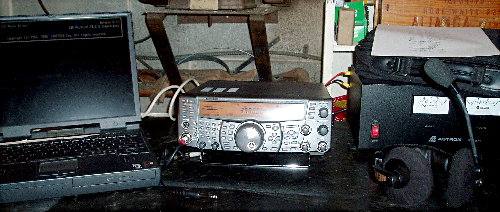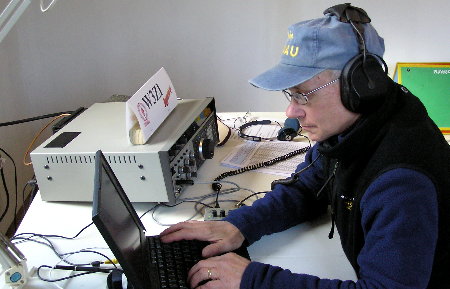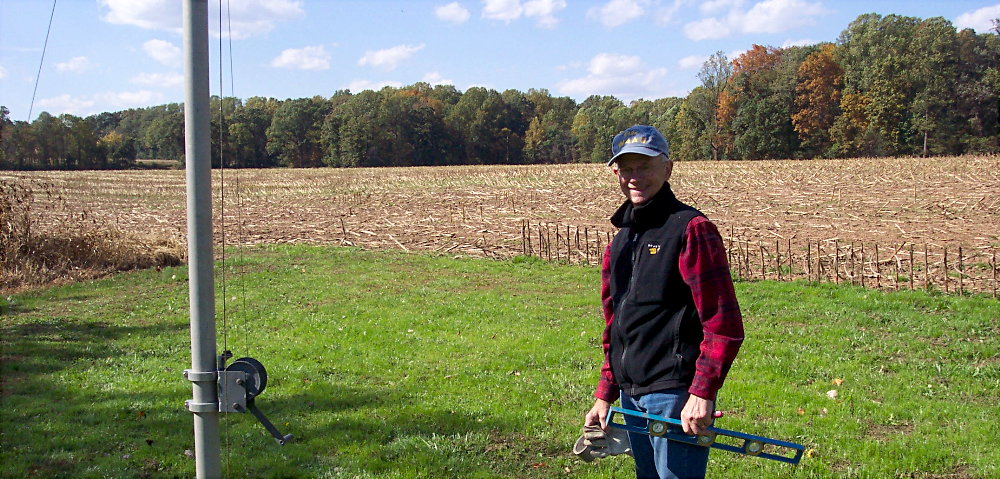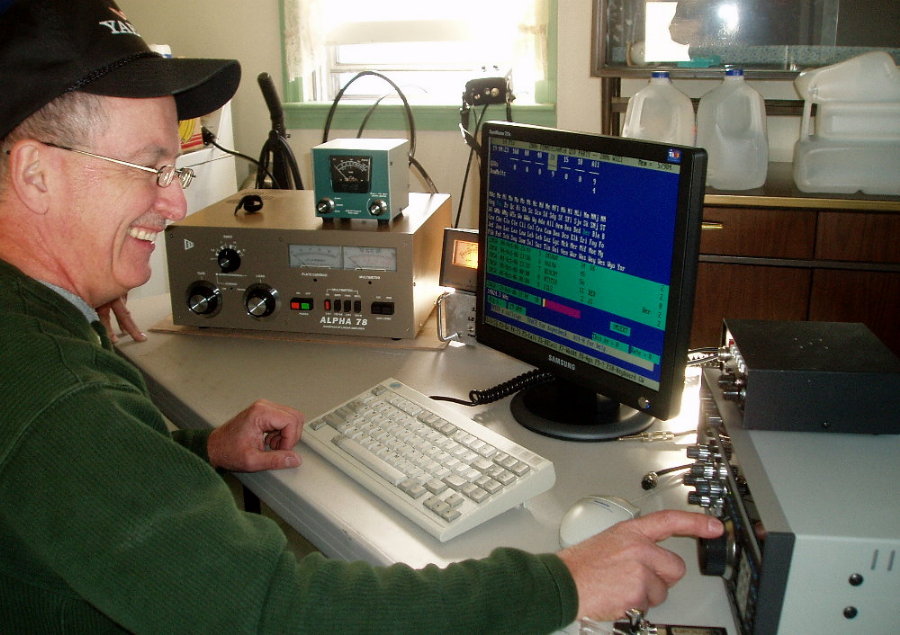W3ZI Multi-Multi Operation in the 2006 Pennsylvania QSO Party
Another eXtreme Adventure By The Guys and Gals Of The Loudoun Amateur Radio Group of Northern Virginia
Scoring Report By John Unger - W4AU, written and reported by Norm Styer - AI2C with photographs by Larry Hughes - K3HE, Bill Buchholz - K8SYH, Denny Boehler - KF4TJI, Gary Quinn - NC4S, and Norm Styer - AI2C
Place your cursor on or over a photograph to see its photograph credits. With a 'Welcoming Greeting': "Let's Get This Party Going" by Jessie Styer of Round Hill, Virginia.
(Loudoun ARG, Purcellville, Virginia - December 11, 2006.) This year, with the encouragement and leadership of Bill Buchholz - K8SYH, a group of eleven members of the Loudoun Amateur Radio Group of Northern Virginia organized and executed a Field Day style operation in the October 2006 Pennsylvania QSO Party. For many years, Bill - K8SYH had operated as a portable station in the PAQP from a campground in the rare Somerset County; John Unger - W4AU had operated out-of-state from Virginia for many years; and Norm Styer - AI2C, operated /3 from his family farm in Berks County in 2004
part time. Mark Johnson - W3ZI Our final configuration looked like this:
Stocking The Kitchen Many of us have prior military and other outdoor experience and we all knew "an army moves on its belly." This operation was no exception. BA Buchholz planned and provided great meals throughout the party. This is our 'Greatest Trade Secret Weapon!!! BA Buchholz - A1 Cook BA started planning the menu well before we all knew who all would be able to make the trip. She has a great reputation for camp style chow and lots of experience with Boy Scout Troops and Explorer Post trips. Plus, she handled the chores when Bill and her went to Summerset County for past PQP operations. It wasn't hard to decided to go once we knew BA was in charged of the kitchen. BA said she sized everything for a small hungry Troop. Tom Garasic - NA4MA Bill had brought most of the food with him on Friday but when BA arrived on Saturday there was another truck load to store around the house. We had 40-quart kettles of all kinds of good smelling and tasting thinks. And, we could have used a second refrigerator; creatively, we kept the drinks outside up against a stone wall. It wasn't hard to push away from the operating position for the call to dinner; luckily, we had enough ready operators so no frequency went unattended. Chester Kmak - WA9LAZ and Tom Garasic - NA4MA Here, before the action starts, Chester and Tom sample some of BA's best. We were lucky that we didn't all have to take a nap after all this good food. |
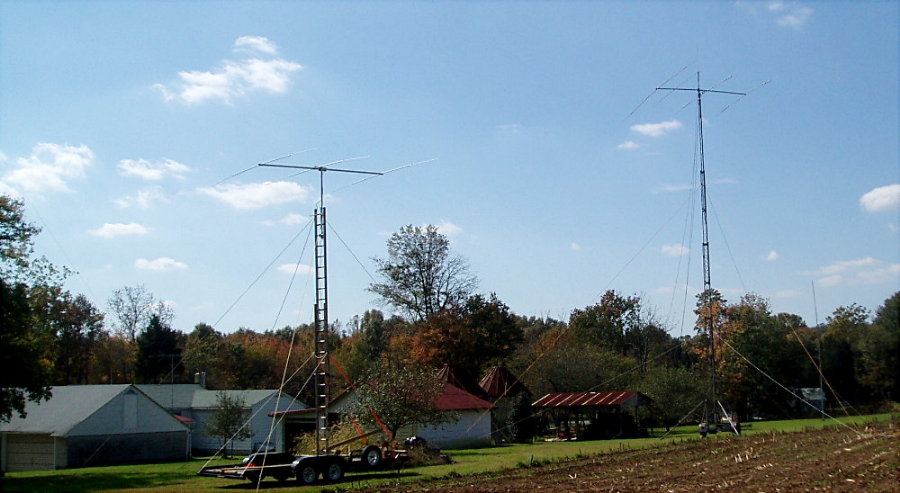 |
Our operating location was on the family farm of Norm Styer - AI2C in southern Berks County; it's in a quiet farming and forest area with low noise levels and good low takeoff angles in every direction. The earliest radio activity from this QTH began in 1953 when Norm set up a Shortwave Listening Station with an old Zenith table top medium and shortwave radio to a 75-foot long wire. He first operated his Novice Station - KN3ZGS from here in 1963 while he was home from Penn State. In recent years, Norm established a small 80 and 40-meter capability and operated in several Pennsylvania and Virginia QSO Parties. The two acres not in active farming around the farm house proved to be just enough to erect our antenna farm. By the time we were done on Friday afternoon, we had added three more antenna systems to the six that Norm had hung or trailered in earlier in the week. |
High Noon On Friday - Up They Go !!! |
The Loudoun ARG trailer-mounted self-supporting, 60-foot crank-up tower was brought in on Friday morning by Gary Quinn - NC4S. We used Gary's Cushcraft A-4 yagi which really only worked on 20M. Gary continues to work on rebuilding these traps. In less than two hours it was fully assembled and tested. Here at the right, Chester - WA9LAZ, Larry - K3HE and Gary - NC4S assemble the yagi. |
Gary - NC4S, Larry - K3HE and Chester - WA9LAZ |
This A-4 goes together just as planned and just as in the past during our many LARG K4LRG Field Day operations. When at 60-feet and in the clear and fed with a KW; it really talked all weekend. Here, Chester - WA9LAZ, Larry - K3HE and Gary - NC4S assemble the boom to element brackets. |
The 15M Yagi and the 160M Dipole
|
The 40M- CW Vertical Loop By John Unger - W4AU
|
The Friday Night Dinner At Colonel Morgan's Place |
|
We finished all the antennas just as the sun went down on Friday night; so, we moved up our reservations at the Heritage in Morgantown and settled in for some fine home cooked food. They were great meals and Colonel Morgan's Place is worth a stop over at the Morgantown Exit of the Pennsylvania Turnpike. By 9 PM we were back on Red Hill; we talked a little more strategy, checked our trusty Windows 98 machines for all our TR Log files and their configurations, and then took 'five' until morning. An Early Saturday Sunrise - It's Going To Be A Nice Day !!! Saturday morning was cool, dry and clear. Angi's pancakes by Tom Garasic hit the spot. And, we wondered how we were going to handle all the other food BA and Bill had provided. At right, Tom Garasic is joined by Denny and Carol Boehler's camper by noon on Saturday. They reported a good sleep on Saturday night. Norm Styer - AI2C and Bill Buchholz - K8SYH The sun was extra bright and a good cup of coffee also helped us spring back to life. We walked the farm and checked the antennas; it was about time to crank them up. |
| Mark Johnson - W3ZI's Quarters
|
These were the overnight quarters for Mark - W3ZI on the left and Tom - NA4MA and guest Larry - K3HE on the right. |
Tom - NA4MA's Quarters
|
Our Multi-Multi Stations |
||
 |
 |
 |
 |
 |
These Are The Dual Stations Built By Mark Johnson - W3ZI
|
|
|
Mark Johnson - W3ZI operated his Kenwood TS-850 HF Transceiver and a Tokyo High-Power Antenna Tuner on 160, 80 and 15 Meters. Most contacts were made with CW. Separate antennas were available for each band. He set up in one of the garages with his other station on 75M SSB in the same car bay. Mark started on 15M than went to 80M - CW until around 0100 GMT when he tried 160M. 80M was best at 2300 and 0200 hours. 160M was fine around 0300Z as advertised in advance and both SSB and CW worked. |
|
Mark - W3ZI Operating 80M CW
|
|
Mobile 15M Yagi By Norm Styer - AI2C |
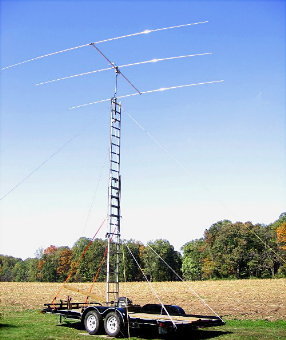
|
The second day was very slow. It was difficult finding new stations. 15M did open a little around noon but it was a lot of CQ PQP'ing throughout the day. As on other bands, the first day is always the best. When the smoke cleared there were over 300 contacts from these various bands in the log. |
|
John Unger - W4AU and Tom Garasic - NA4MA Listen To Mark Johnson - W3ZI Operate 80M CW |
Performance: Things were slow for several hours at the start; Mark kept checking both 80M CW and 15M. By 5 PM and at around sunset, 80M came alive and Mark over a hundred contacts. Later around 8 to 9 PM activity picked up again and after that Mark spent a couple hours on 160M with some surprising results for a state QSO party - this is very cool. Well after that, as you can see, things were just hard work finding someone new. We sure hoped to find more on 15M on Sunday afternoon and Mark gave it a good 'college try'. In the end, over 300 contacts made it into the log. |
|
Mark - W3ZI, Tom - NA4MA and Chester - WA9LAZ On 80M SSB |
|
 |
The 75M SSB and 2M FM station by Mark Johnson was his Kenwood TS-2000. There was a 75M dipole up about 55-feet and a 2/440 Diamond Co-Linear vertical antenna provided by KF4TJI - Denny Boehler on top of the 60-foot crankup tower. |
Mark - W3ZI's TS-2000 On 80M - SSB and 2M
Chester Kmak - WA9LAZ was the prime operator on 75M SSB. Denny and Carol Boehler helped also and they tried 2 and 440 several times with little luck. |
|
 |
| Chester Kmak - WA9LAZ handles 75M-SSB - On Sunday Looking For The Last One !!! |
Performance: Four hours into the Party and 75M SSB started to come alive since most folks had started on 40M and were now ready for some new territory. Two-thirds of the total 300-plus contacts were in the log by 7 PM local. There were surprisingly many mobiles in some rarer countries that showed on 75M and would be easy to contact once you found them. . On Sunday, Chester spent a lot of time calling and a lot more time listening for the last one or two counties that we needed. This really paid off; our 'last one' was worked on Sunday afternoon by Chester. |
|
John Unger - W4AU Operating 40M CW |
As always, John Unger - W4AU is our anchor on 40M-CW. His station was his Ten-Tec Omni VI+ and his 40M full vertical loop. He also used an ICE Combination Bandpass Filter Model 419B. John set up in an empty spare bedroom. John really enjoys 40M and the Charlie Whiskey. His Ten-Tec has 'good ears.' |
John Unger - W4AU Checks 40m Loop Tuning |
|
| Again, the first day is always the best; John had about 250 contacts in the log by 8 PM an then things got much lighter. And again, we caught John reading the latest issue of QST while putting them in the log. At the right, John uses an antenna analyzer to confirm the 7040 kHz resonates on his loop. |
John Unger - W4AU Operating 40M CW |
|
|
Here John puts some weak ones in the log. His vertical delta loop really hears well. |
John Unger - W4AU Says "It's Perfect |
|
|
John actually surveys in his loop; now, that is attention to detail. His loop is vertical and is easy to erect. Part of its pattern includes a nice low takeoff angle. It took him only 2 calls to tab the KH6 for one of the last ARRL sections on Saturday |
Performance: 40-Meters opened fast on CW - twice that of SSB. Like other low bands, most Pennsylvania party goers only attended the first session. Thanks for the diehards who showed up from other bands on Sunday. You really want to operate Charlie Whiskey to stay in the chair on Sunday at rates like this. |
|
Norm Styer - AI2C Operating The LARG's Kenwood TS-440
|
The Loudoun ARG's Kenwood TS-440 HF Transceiver, a companion 120V AC power supply, and a 40-foot high 40M dipole was used on 40M SSB. Norm has deployed this setup to the farm many times over the past few years. Like the other low bands, we used a W3NQN Single Band Transceiver Bandpass Filter. And Norm had his Johnson Matchbox in-line. The only in band interference among all stations occurred between 40M CW and SSB stations. Some thought it might be grounding, or it was the 440's front end, while others thought it might be ..... Anyway, it was more like 'intermod' as there were spots on 40M SSB frequencies where there was fairly strong CW birdies but you could run at other places or otherwise you asked for fills. This slowed thing a little but it was nice to hear what John was working. Next time out, we'll have to do some testing with other rig - antenna configurations. |
Performance: 40-Meters sideband started slower and got slower. Maybe they went to CW but signals were just down. As the band seemed to die Norm took a break during the second hour and was wondering around seeing how the other stations were doing when he got this frantic call to get back to the rig. Conditions cleared up and for a hour or so the TR Log 10-Minute Rate Meter sat above 150 - it was 100+ hourly rate at 2 PM. Then that was that until late on Sunday just before 'close station' when it opened nice to Pennsylvania and a lot of mid-west stations. We all expected better from 40M SSB; we'll have to look at something different for the next one. Though, we were not the only ones complaining about 40M; the Internet cluster comments about the 40M conditions ran about the same as we experienced. In the end, there were 380+ QSOs in the log. |
|
| Gary Quinn - NC4S's Station: 20M CW & SSB |
 |
This was our super station. Gary Quinn put together a first class station on the enclosed back porch and used the 240V clothes dryer outlet to power his Alpha 78 Amplifier. Gary was also sporting his new LCD monitor. Gary, thanks for a super job. |
|
There were a few other goodies that Gary employed including an MFJ Voice Keyer, a Logikey CW Electronic Keyer, a Bencher BY-2 Chrome Key, an Alliance antenna rotor, an ICE Combination Bandpass Filter Model 419B, a very old but looking like new Heathkit HM-102 1.8-30 Mhz Watt/SWR meter, an adjustable dual headphone distribution box - recommended by N4PD for Field Day stations, and a footswitch. Once he got the levels set on the voice keyer everything just hummed all weekend. |
|
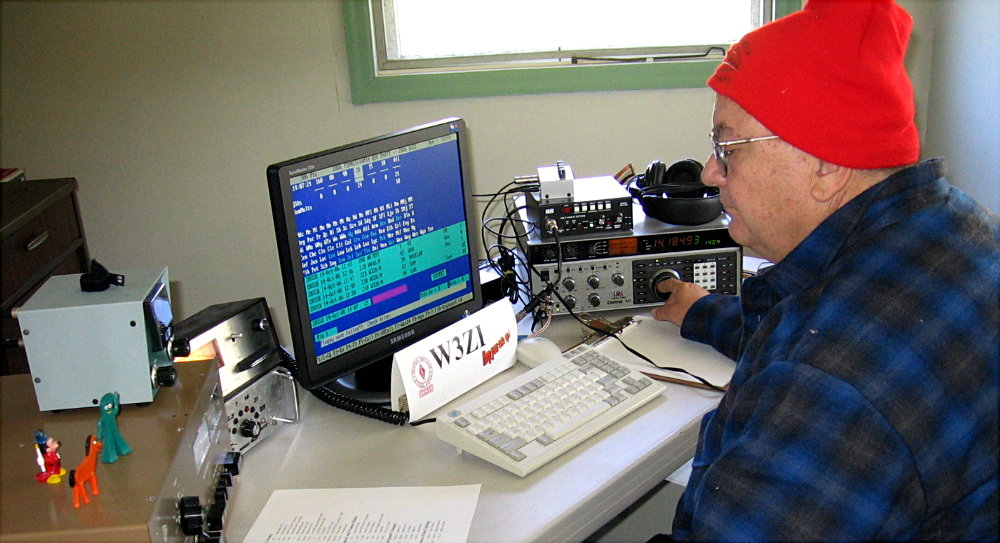 |
Almost everyone had to try this outstanding setup. The calls just kept rolling in. Here, Chester Kmak - WA9LAZ on the left and Bill Buchholz - K8SYH below take turns. |
During those high rate periods, folks would get inspired by the TR Log 10-Minute Rate Meter which would set well above the hourly rates. Gary held it at 90+ for many hours. |
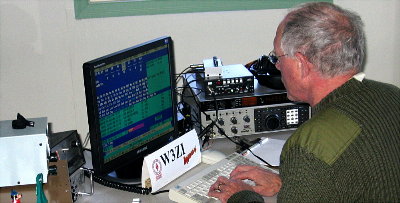 |
Performance: Twenty opened well with almost 80 in the log during the first hour but when conditions dropped in the second hour, Gary went to CW but that quickly dried up also. It's a little surprising that Gary never got back to CW - guess we need one or more 20M CW PaQP window announcement. By late afternoon, the rest of the western US was there and produced a couple ~70 hour rates. Twenty folded by 8 PM on Saturday; there were 500+ contacts in the log. Sunday was a little less exciting; there was a nice 60 per hour run around 2 PM on Sunday. Sunday yielded another 300+ contacts. Before dupes we had 870 QSOs for this band. Not bad and very comparable to what we expected. |
|
Final Our final score is 382,888 with 2164 good QSO's. We worked all 67 Pennsylvania counties, 76 US and Canadian Sections, and 1 DX for a total of 144 mults. We had 23 good QSO's with N3SH stations for an additional 4,600 points! Please note that all charts contain all QSOs; we had over fifty dupes. |
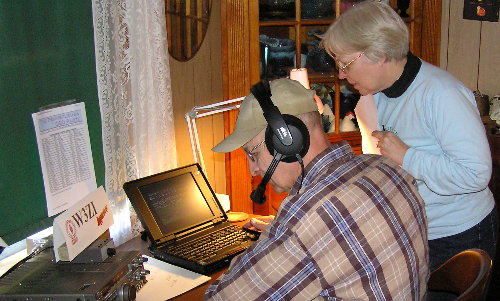 Carol - KF4TJJ Keeps Track Of The Last Few Needed Counties |
Our "MO" Our key operators have many, many decades of combined HF phone and CW contesting and DX-ing experience; there is plenty of wallpaper around these guys home QTH's in Northern Virginia. Several have been on the DX side of many pile-ups, so operating individual or multi-multi contest stations is a lot of fun to all of us. We also enjoy putting the Loudoun ARG's K4LRG through its paces in the annual ARRL Field Day; so, this Pennsylvania QSO Party operation was a natural for us. Late Saturday night, we made a list of stuff we still needed. Then on Sunday, Carol monitored the Internet spots and kept track of our remaining missing multipliers. We found the rarer KH6-section late Saturday on 40M CW this way and on Sunday, Chester - WA9LAZ hunted down Sullivan and Clearfield Counties on 75M SSB. |
||||||||||
| Carol - KF4TJJ Checks For New Reports 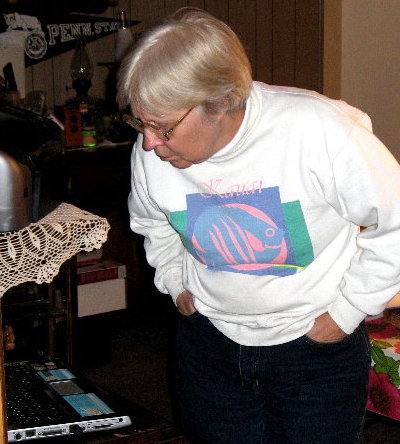 |
The Last Ten Multipliers At W3ZI |
|||||||||
Pennsylvania Counties |
United States & Canadian Sections |
|||||||||
Nr. |
County |
BD-Mode |
Day - Z Hr |
Nr. |
Section |
BD-Mode |
Day - Z Hr |
|||
58 |
DAU |
75-SSB |
Sat--20Z |
67 |
CO |
20-SSB |
Sat--19Z |
|||
59 |
LAC |
75-SSB |
Sat--20Z |
68 |
WY |
20-SSB |
Sat--20Z |
|||
60 |
MIF |
75-SSB |
Sat--20Z |
69 |
EB |
20-SSB |
Sat--20Z |
|||
61 |
CLI |
80- CW |
Sat--22Z |
70 |
KY |
40-CW |
Sat--20Z |
|||
62 |
WAY |
75-SSB |
Sun--00Z |
71 |
ND |
20-SSB |
Sat--21Z |
|||
63 |
FOR |
80-CW |
Sun--01Z |
72 |
WTX |
20-SSB |
Sat--21Z |
|||
64 |
FRA |
160-CW |
Sun--02Z |
73 |
NV |
20-SSB |
Sat--22Z |
|||
65 |
PIK |
80-CW |
Sun--14Z |
74 |
NS |
80-CW |
Sun--00Z |
|||
66 |
SUL |
75-SSB |
Sun--18Z |
75 |
PAC |
40-CW |
Sun--03Z |
|||
67 |
CLE |
75-SSB |
Sun--18Z |
76 |
NI |
20-SSB |
Sun--18Z |
|||
A unique feature of the PaQP is the designation each year of a different Pennsylvania club to deploy multiple special event stations throughout the state. Contacts with these stations each count as 500 bonus points. This year, N3SH of the Wireless Association Of South Hills from Pittsburgh,
PA., operated throughout western Pennsylvania. We were fortunate to work them for 23 good contacts. Here is an extract of our TR Log; it is like the one recently posted on the Internet by the PaQP sponsors. |
|
|
A little too much? Well, we boiled the above chart down a little. First, Norm assigned distance ranges to each county and section - yes, all 144 of them - then this chart was sorted based on assigned distance. Then a second range chart was created which rolled all counties and sections into the range categories. That was still a big chart; so, John normalized the data and it is displayed below in two charts:
|
Slide In The Chair Though the station captains took the first few hours, we had a veteran core of operators to 'take the chair.' Larry Hughes - K3HE and Denny Boehler - KF4TJI were great on phone and Bill Buchholz - K8SYH and Tom Garasic - NA4MA also did some long periods on Charlie Whiskey. Carol and Denny also tried 2/440 several times throughout the weekend but ran into only the same local stations. And, anyone on break when not chowing down was interested in what else had to be worked or what chore still needed to be done. Tending the big old wood furnace in the basement was a prime off-duty duty. It was wonderful how everyone worked so well together. |
|||
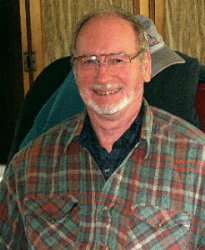 |
 |
 |
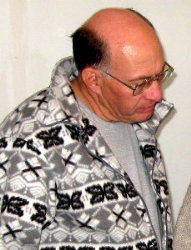 |
Larry Hughes - K3HE de Leesburg, Virginia |
Bill Buchholz - K8SYH de Potomac Falls, Virginia |
Tom Garasic - NA4MA de Haymarket, Virginia |
Denny Boehler - KF4TJI de Leesburg, Virginia |
|
|
|
|
|
|
|
|
|
|
|
|
|
|
|
|
NNNN |
|
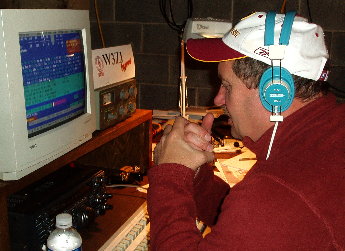
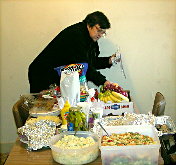
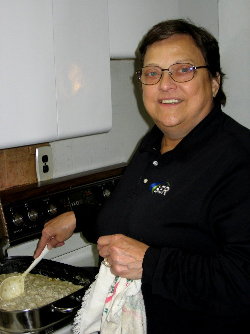
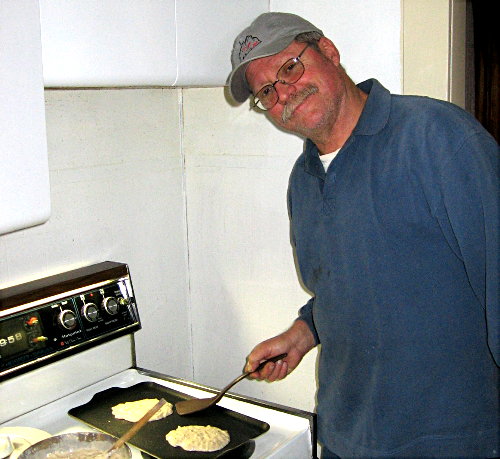
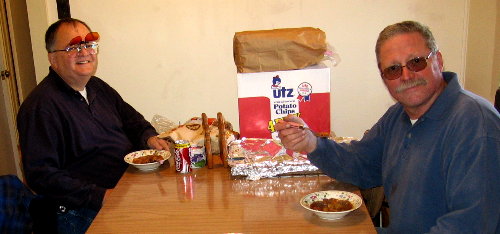
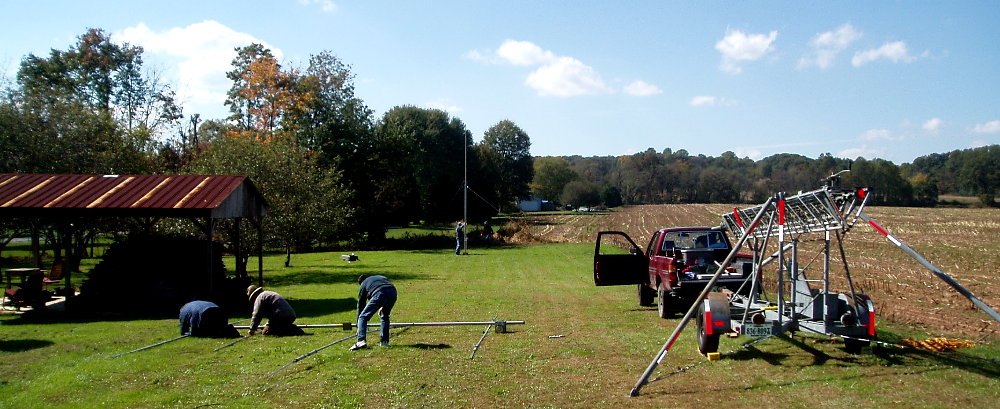
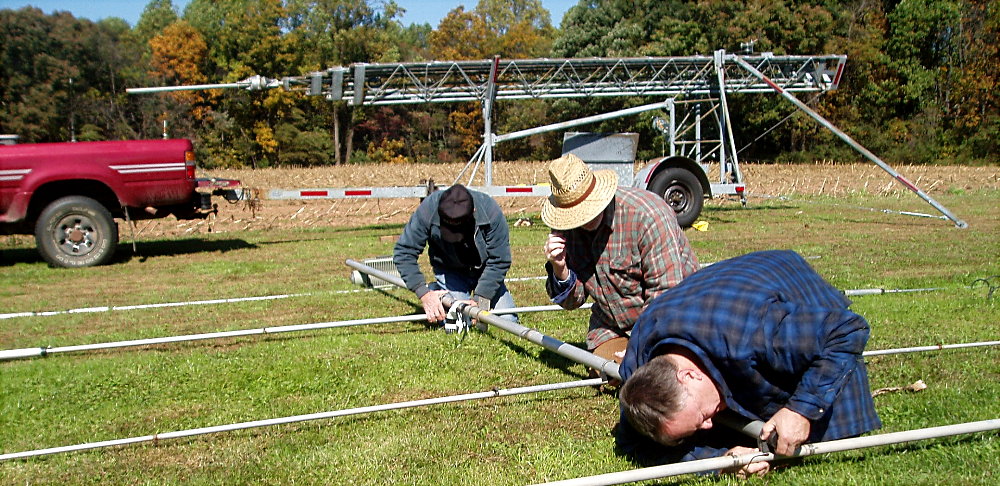
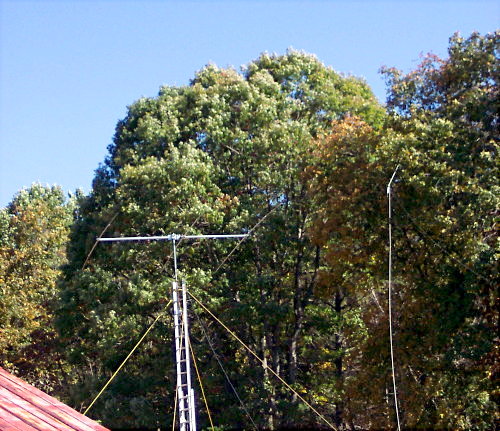
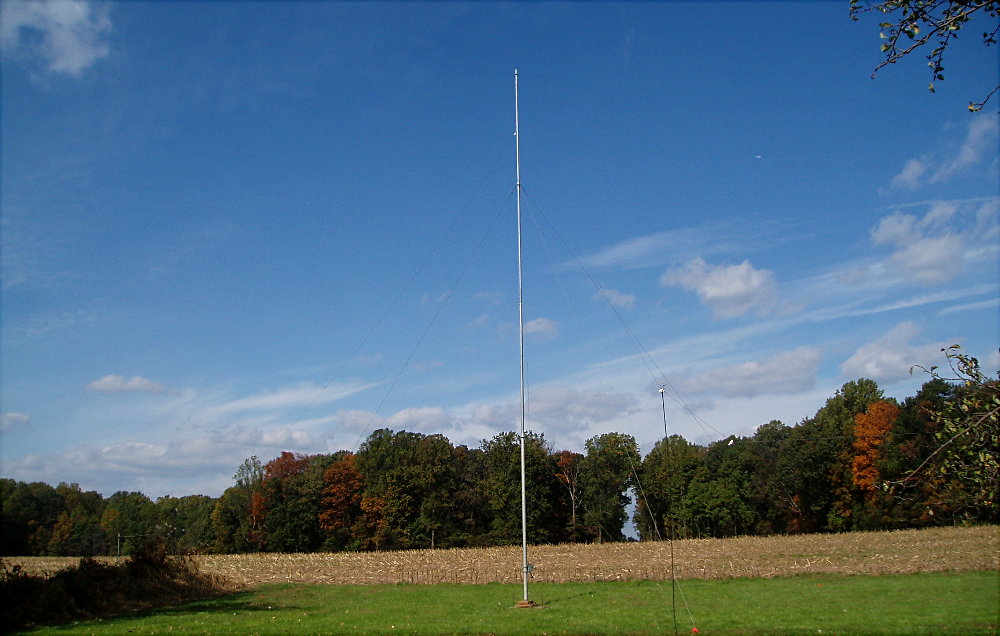


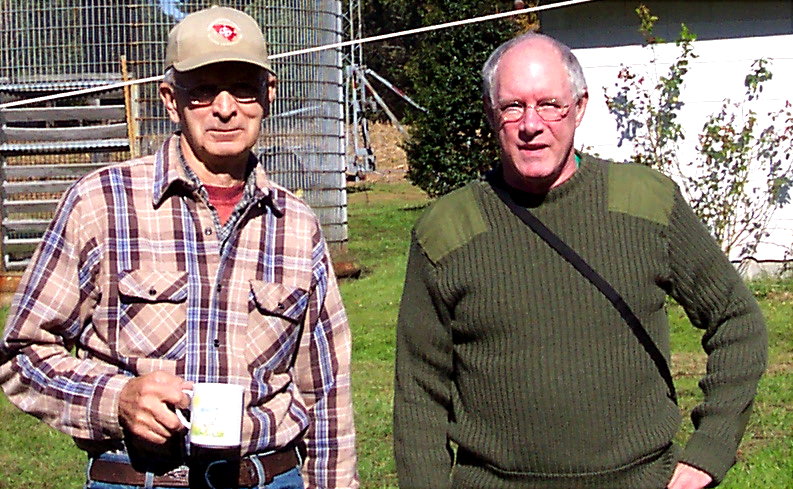
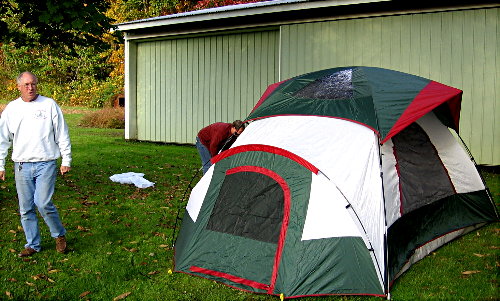

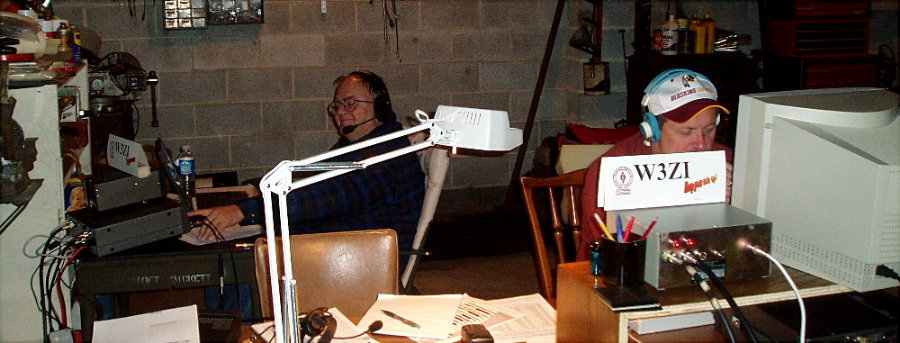
 Mark Johnson - W3ZI's 1st Station:
Mark Johnson - W3ZI's 1st Station: